Chevrolet Traverse Vs Chevrolet Tahoe Comparison: Which SUV is Right for You?

Are you familiar with the term “chalk and cheese?” Around these parts, it is often used to describe a pair of brothers who hail from the same family but have markedly different personalities. One passed the bar, for example, while the other owns one. Neither is necessarily better than the other but their differences could hardly be more vast.
Such it is with the two biggest SUVs from Chevrolet. Arguably, one is a crossover—not an SUV—thanks to its unibody structure and front-wheel drive bones. Nevertheless, both can haul three rows of passengers when properly equipped and the vast majority of those sold send power to all four wheels.
Is the large-and-in-charge Tahoe the right choice for your three-row bowtie family? Or should you pop for a Traverse? As always, we’re here to help.
Powertrains
Traverse: Chevrolet offers just a single engine in the Traverse—a 3.6-liter V6. The former crests the 300 horsepower mark while also heaving out 266 pound-feet of twist. This is generally in line with its competition. Gear shifting is taken care of by way of a nine-speed automatic.
Get a Quote on a New Chevrolet Tahoe or TraverseTahoe: A choice of gas V8 engines are available to buyers of the latest Tahoe. The base 5.3-liter V8 engine makes 355 hp and 383 lb-ft of torque. Its active fuel management system shuts down four cylinders in a bid to save fuel. Equipped with a 10-speed automatic, the smaller bent-eight is a fine engine. A much better choice is the optional 6.2-liter V8 which, mated to the same 10-speed automatic, makes a healthy 420 hp and 460 torques.
Chevrolet also now offers its torquey 3.0-liter turbodiesel in the Tahoe. Horsepower sits at 277, but torque is a 6.2-matching 460 lb-ft of twist.
SEE ALSO: 2021 Chevrolet Tahoe First Drive Review: Raising the StandardBottom Line: This jaundiced ear is a fan of the old-school V8 bellow, so my recommendation of the 6.2-liter V8 Tahoe should not be a surprise. An appropriate number of cogs in the gearbox assures it will more than get out of its own way, though the exhaust roar may cause the McServer to repeat himself in the drive thru. It is important for newbies to remember that the Tahoe is rear-wheel drive while the Traverse is front-wheel drive when they are not sending power to all its corners.
Fuel Economy
Traverse: As one might expect, all-wheel drive exacts a fuel economy penalty in this three-row rig. In city driving, expect 18 mpg from front-drive models but only 17 mpg from those sending power to all four corners. Ratings are 27 mpg and 25 mpg on the highway, respectively. The front-driver scores 21 mpg combined, while the all-paw Traverse is an even 20 mpg.
Tahoe: This model appeals to those who prefer a traditional SUV, and the Tahoe’s fuel economy is quite traditional indeed. City driving results in a wallet-sucking 16 mpg for 5.3-liter models and 15 mpg for 6.2-liter models—both in 2WD form. No matter which gas engine you opt for, the EPA rates it at an even 20 mpg highway. Speccing the 4WD system knocks 1 mpg off every tally.
Go for diesel power and the big Tahoe gets almost economical: we’re talking 21 mpg city, 28 mpg highway, and a combined 24 mpg in 2WD form. The figures are 20/26/22 mpg, respectively, for the 4WD models.
Bottom Line: A note about the Tahoe—while it may seem counterintuitive for a bigger engine to get better fuel economy on the highway, consider that the 6.2-liter doesn’t need to work as hard while moving that enormous mass through the air. If you stick to gas only, the Traverse has this category sewn up. If you can stretch the budget to include diesel, then it’s Tahoe.
Cabin Space
Traverse: Without a sunroof, there is a vast 41.3 inches of headroom in the front row, a measure which hardly drops off as one moves through the second and third row of seats. Legroom checks in at 41.0 inches up front, 38.4 inches in the middle, and just 33.5 inches in the way back. EPA rates total passenger volume at 157.3 cubic feet.
Tahoe: Big on the outside means big on the inside … at least in a couple of measures. First row headroom beats the Traverse by 1.5 inches but is on par in each of the other three rows. Legroom is a stretch-em-out 44.5 inches for the driver and front-seat passenger, while second row urchins get 42.0 inches of space. Those relegated to the third row need make do with 34.9 inches of legroom—10 more than the previous generation. Plan ahead if you’re taking the entire crew. Total passenger volume? 168.3 cubes.
Bottom Line: If your daily tasks include schlepping around seven people, the Traverse is the way to go. Thanks to its unibody design and front-drive architecture, its third row is barely smaller than its much larger sibling. However, there’s no denying the amount of space in the first and second rows of Tahoe (especially for the driver), so an examination of just how many people you’ll be carrying is important before signing on the bottom line for a new three-row rig at your Chevy dealer.
Cargo Capacity and Trailering
Traverse: Flipping the second and third rows into their stored and locked position opens up an impressive 98.2 cubic feet (2,780 L) of storage space in the Traverse. With only the third row folded, 58.1 cubes (1,645 L) are revealed and, with all seats in place and ready to accept passengers, 23.0 cubic feet (651 L) takes up residence in the far aft compartment. Towing maxes out at 5000 lb with the V6 and trailering packages.
Tahoe: Cargo volume is a vast 122.9 cubic feet (3,480 L) in the Tahoe if you fold all the seats and turn it into a very large two seat conveyance. Behind the second row, one will find 72.6 cubes (2,055 L) and 25.5 cubic feet (722 L) take up residence behind the third row of chairs. Properly equipped, the Tahoe can tow a maximum of 8,400 lb.
Bottom Line: Neither vehicle is small, as evidenced by their enormous footprints in the mall parking lot. Previous Tahoes couldn’t match the Traverse’s interior storage thanks to their chunky drivetrains eating into space, but that’s no longer the case: the Tahoe simply holds more. It wins the towing contest with ease too, of course.
Technology
Traverse: Certain models of Traverse include luxurious goodies like ventilated seats and heated second row chairs. Wireless charging appears as standard on high-zoot trims, as do driver aids like adaptive cruise control and forward automatic braking. Infotainment duties are handled by an 8.0-inch touchscreen (7.0-inch in base models), while tri-zone climate control is standard on all trims. The latter will do a good job in keeping backseat urchins at bay.
Tahoe: This brute isn’t exactly a Luddite, but the Tahoe is decidedly old-school. A standard 10.2-inch infotainment screen does keep it up-to-date on the tech front though, while a 15.0-inch head-up display is available on higher trims. The Tahoe’s body-on-frame architecture is heavy, its traditional suspension setup consumes a lot of space, and its base engine is rooted in another time. However, all of these components have been in production for ages, ensuring a relatively cheap schedule of maintenance and easy parts availability once the warranty runs out.
Bottom Line: While the Tahoe may come off as old fashioned with its brace of V8 engines and body-on-frame construction, it does pack enough kit to be competitive in its segment. However, anyone trading up from a Honda CR-V or Hyundai Santa Fe will feel more at home in the Traverse.
Style
Traverse: This section is always subjective but it’s hard to argue against the fact that this big three-row Chevy looks like a wide mouth Mason jar. Grafting the company’s corporate schnoz onto such a big vehicle has the effect of scaling the big grille—which looks fine on the Malibu—up to 8/7ths size. If I saw a salmon with this big a mouth jumping out of a BC river, you can bet I’d cast my line immediately.
Tahoe: With a lantern jaw and square lines, the Tahoe looks every inch an SUV. A slight restyle a few model years ago was enough to differentiate it from its Silverado brother, at least to the point where they don’t share headlight assemblies anymore. Note well: a new Tahoe is slated for 2021, at which time it is likely to incorporate some of the new Silverado’s controversial Camaro-inspired styling decisions.
Bottom Line: The Tahoe looks great. Don’t @ me.
Pricing
Traverse: For the 2021 model year, Traverse sets an opening bid of $30,995 for a base L model with the V6 engine and front-wheel drive. These rental-spec specials are hard to find on dealer lots but do appear if you look hard enough. The cheapest AWD Traverse is a $36,395 LS trim. Snazzy and leather-lined all-wheel drive V6 High Country models can approach sixty grand when all the option boxes are checked.
Tahoe: The accounting department of Chevy likes its trucks, as evidenced by the pricing applied to the Tahoe. This truck starts at a hair over $50,000 for a rear-wheel drive LS model powered by the 5.3-liter V8 engine. Getting the hand-of-god 6.2-liter V8 requires a spendy $70,000 investment, as it’s only available on the top High Country trim. Check the right boxes, and it’s possible to spend an eye-watering $80,000 on a new Tahoe.
The diesel engine option is a $995 upgrade over the 5.3-liter, available on every trim except the Z71.
Bottom Line: The Traverse will undoubtedly move seven people a heckuva lot cheaper than any iteration of the Tahoe. GM is quite obviously addicted to profits from its trucks, to the point where the coroner will likely find Tahoe- and Silverado-shaped tracks on its arms during autopsy. Nowhere is this more prevalent than in the pricing of the entire Tahoe range.
In Conclusion: Chevrolet Traverse vs Tahoe
Given these vehicles’ similar abilities to haul people and stuff, one’s choice will invariably come down to a form of personal preference. Those seeking to trade up from a smaller car-based crossover will surely feel more comfortable in the Traverse, while anyone replacing a pickup truck will certainly prefer the Tahoe. Financial savings of the former over the latter will likely be vast, both from its initial purchase to fuel costs. But, if you want to schlep seven people while hauling a bass boat, Tahoe is one of the only games in town.
Become an AutoGuide insider. Get the latest from the automotive world first by subscribing to our newsletter here.

Living in rural Canada, Matthew has immersed himself in car culture for over 30 years and relishes the thought of a good road trip. A certified gearhead, he enjoys sharing his excitement about cars and is very pleased to contribute at AutoGuide. Matthew is a member of Automotive Journalists Association of Canada (AJAC).
More by Matthew Guy





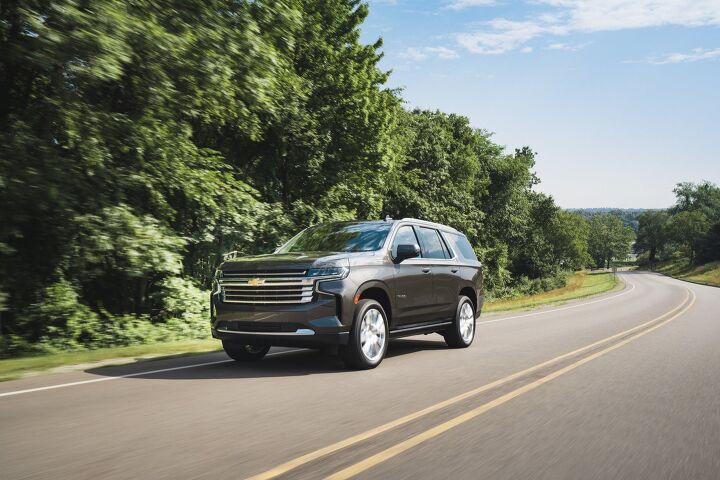

























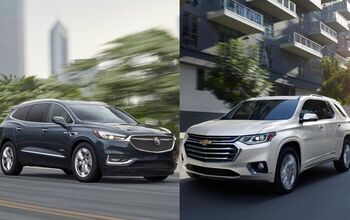
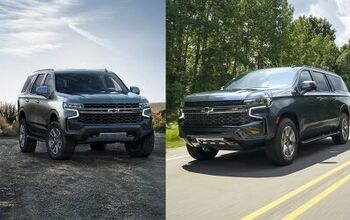

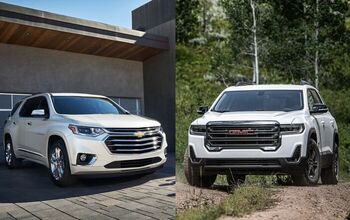

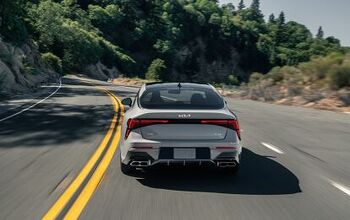

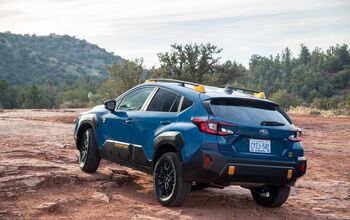



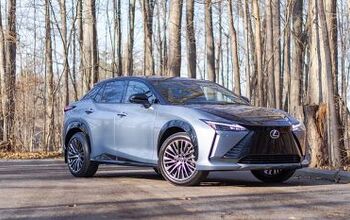


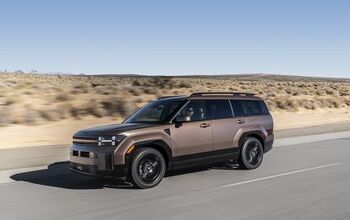
Comments
Join the conversation
How can you turn off the auto stop on a 2018 chevy Traverse.